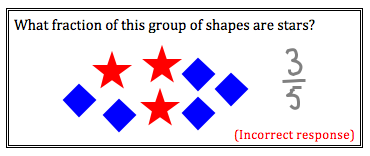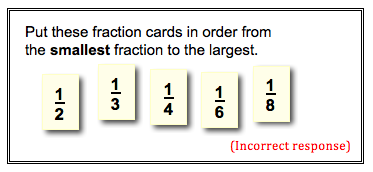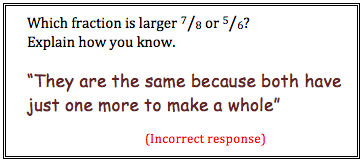Home > Topdrawer > Fractions > Misunderstandings > Fractions as a double count > Wrong number
Wrong number
When working with fractions of collections, students using the double-count strategy can lose sight of the whole and interpret a part-whole situation as a ratio.
Students who automatically use the double-count strategy can be easily fooled by tasks such as this. Even though they know there should be equal parts, they are too focussed on counting parts to visualise the missing dividing lines.
When a fraction is perceived as consisting of two whole numbers, it is easy to forget about the relative size of the parts and just focus on the size of the numbers.
A sense of the relative size of fractions can be lacking in students who persist in seeing the numerator and denominator as separate counts.




